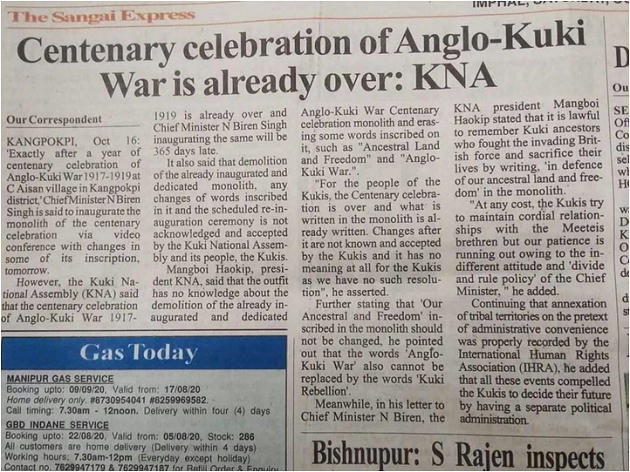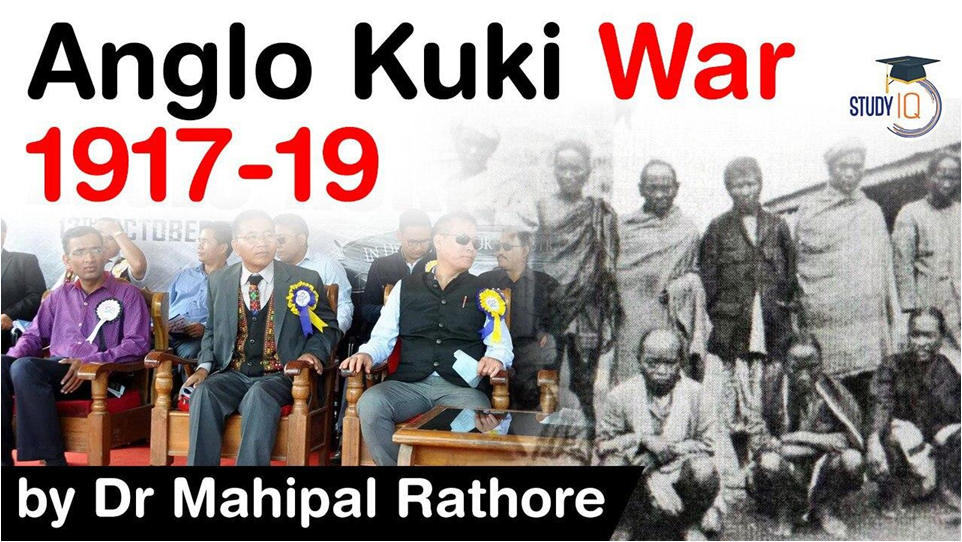Table of Contents
Who are Kuki People?
- The Kuki tribe is spread across states of the North East, parts of Myanmar and the Chittagong Hill Tracts in Bangladesh
- *It is believed that Kukis came to Manipur in the late 18th/early 19th century from neighbouring Myanmar.
- Some of the Kukis settled next to the Myanmar border, others settled in Naga villages, which ultimately became a contentious issue between the two tribes.
- Major population centres – In hills that ring the Imphal Valley



- The areas Kukis claim to be their homeland in the Manipur hills overlap with the Greater Nagaland or Nagalim – demanded by Nagas

- 1826 – Treaty of Yandabo, bringing to an end the First Anglo-Burmese War.
- Under the Treaty, the Burmese signed away large tracts of what is now India’s North East, including Assam, Manipur and the hill areas, to the British.
- Little British control over ‘tribal hills’
- 19TH Century – Kuki raids into British administered territories.
- To thwart the periodic raids by hill tribes into their territories, the British built military capabilities. (Assam Rifles)
World War 1 1914 – 1919
- During the War, the British were recruiting thousands of people from its empires to assist them in the war effort.
- In January 1917, the British Indian government ordered the Maharaja of Manipur to supply non-combatants to serve in the War.
- The Nagas were pressed into service as part of the Imperial Army’s Labour Corps, a vast body of men recruited to build roads, carry luggage and provide other kinds of logistical support.
- The Kuki chiefs refused to join and instead declared war in 1917.
- Great Kuki Rebellion
- Kuki Rising
- Anglo-Kuki War
- Zou Gaal
The War
- The Assam Rifles and the Burma Military Police were deployed initially, but by November 1918, the British Indian Army had to be called in.
- The war saw short, sharp skirmishes between British troops and Kuki contingents
- Kukis relied on guerrilla warfare tactics.
- Kuki militias were outnumbered and worn down by the constant flow of British troops into the region.
- The British were successful in subduing the Kukis.
- Kukis serving collective punishments as the Kuki population was subjected to penal labour for five years and their leaders were transported and subject to trials.
- British launched a policy of “disarming” the martial tribe.
Controversy over centenary
- The Anglo-Kuki War Centenary Commemoration Committee under the aegis of Kuki Inpi Churachandpur (KIC) is the apex body of Kuki people in various north-eastern states.
- KIC asked all Kuki villages to install memorial stones with the inscription.
- Naga bodies objected to the Kukis installing these stone memorials on the Naga’s ancestral land.
- In 2019, Manipur government ordered the stone memorials installed by the Kukis be taken down
Naga stance
- The Nagas claimed that the Kukis have been trying to distort history as there has been no “Anglo-Kuki War” but a “Kuki Rebellion” in 1917.
- The United Naga Council (UNC), the apex body of the Nagas of Manipur, asserts that the Kuki rebellion against the British was for labour recruitment drive under the Labour Corps Plan.


Latest Burning Issues | Free PDF
























 WhatsApp
WhatsApp